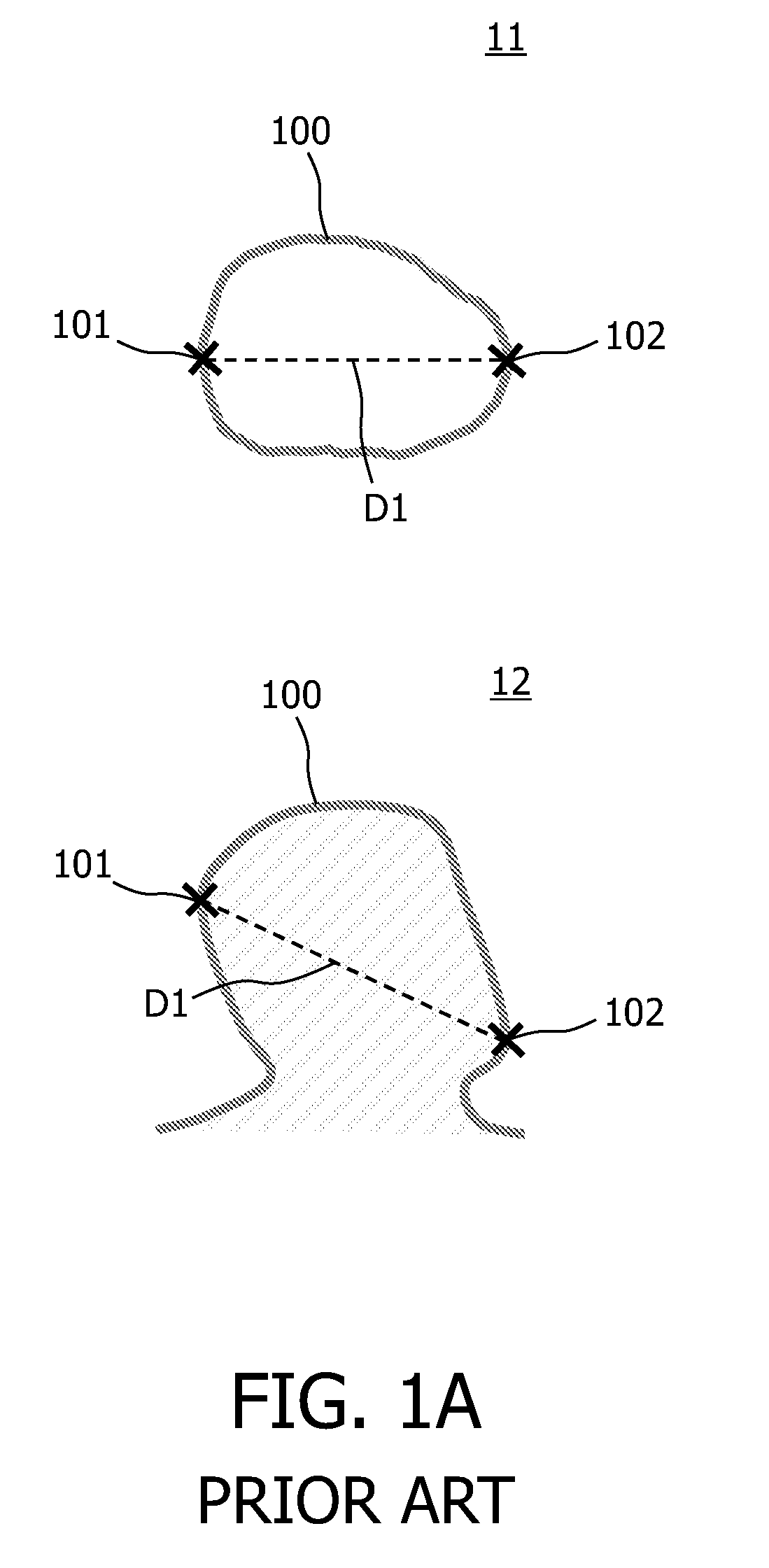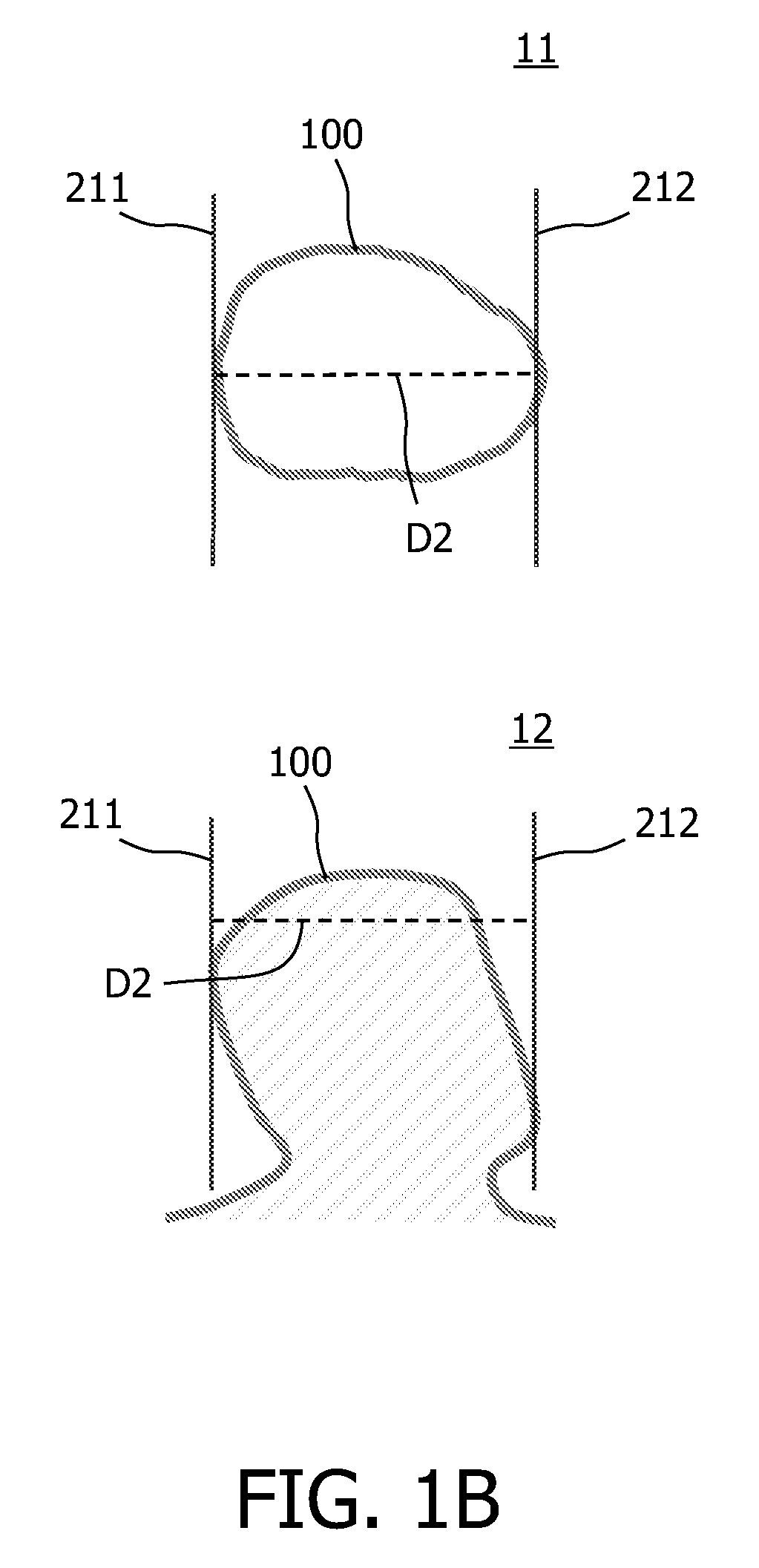Caliper for measuring objects in an image
a technology for measuring objects and images, applied in the field of image analysis, can solve the problem that the measurement of the size of objects may be less accurate, and achieve the effect of improving the visualization of anatomical measuremen
- Summary
- Abstract
- Description
- Claims
- Application Information
AI Technical Summary
Benefits of technology
Problems solved by technology
Method used
Image
Examples
Embodiment Construction
[0042]FIG. 2 illustrates exemplary embodiments of the caliper of the invention. A first embodiment 21 of the caliper comprises a first planar surface 211 and a second planar surface, substantially parallel to the first planar surface 212. The first and second planar surface are both a rectangle. The rectangles are aligned with each other, i.e., the line determined by a pair of corresponding vertices of the first and second planar surface is substantially perpendicular to the first and second planar surface. The skilled person will understand that other shapes and / or alignments are also possible and that the scope of the invention is not limited by the shape and alignment of the first and second planar surface used to illustrate the invention. For example, in an embodiment, the first and second planar surface may be a triangle or a circle. In an embodiment, a circle of the first planar surface may have a radius different from, or may be not coaxial with, a circle of the second planar...
PUM
 Login to View More
Login to View More Abstract
Description
Claims
Application Information
 Login to View More
Login to View More - R&D
- Intellectual Property
- Life Sciences
- Materials
- Tech Scout
- Unparalleled Data Quality
- Higher Quality Content
- 60% Fewer Hallucinations
Browse by: Latest US Patents, China's latest patents, Technical Efficacy Thesaurus, Application Domain, Technology Topic, Popular Technical Reports.
© 2025 PatSnap. All rights reserved.Legal|Privacy policy|Modern Slavery Act Transparency Statement|Sitemap|About US| Contact US: help@patsnap.com



